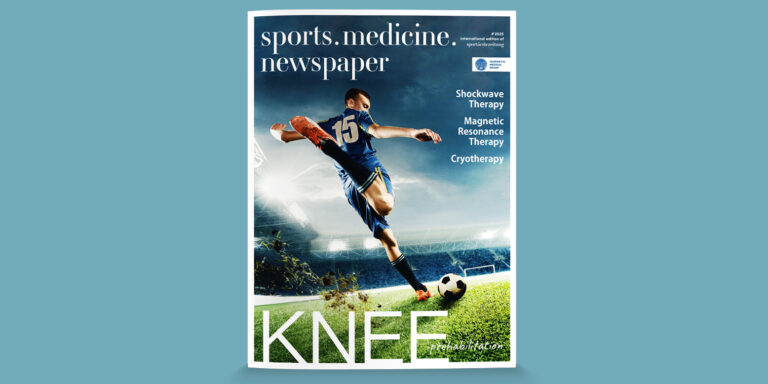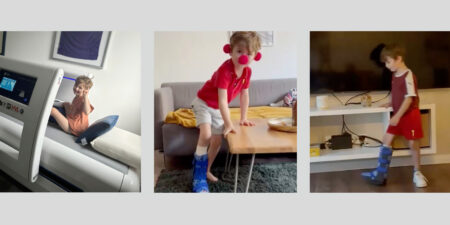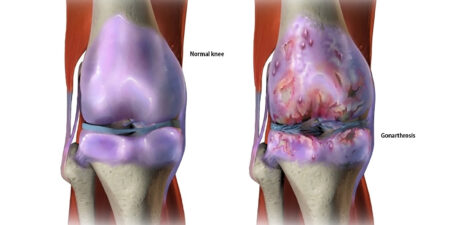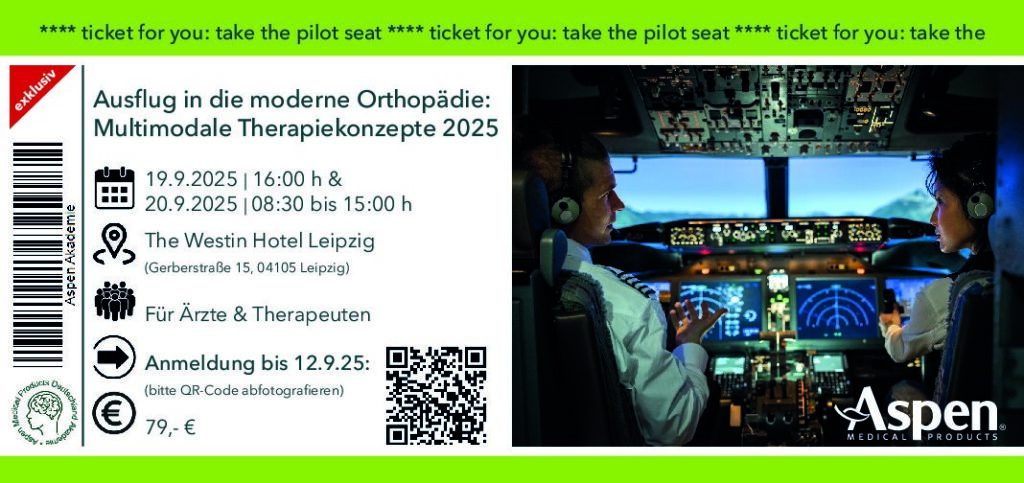This case report describes the early postoperative management of a subtotal proximal hamstring tendon avulsion treated with transosseous refixation. A structured rehabilitation program, including radial extracorporeal shockwave therapy (rESWT), magnetic resonance therapy (MBST), and neuroreflexive hyperbaric CO2 cryotherapy, facilitated effective pain relief, reduced inflammation, and accelerated functional recovery. The treatments were well-tolerated, and no adverse effects were reported, demonstrating their safety and efficacy.
Patient History
A 39-year-old male recreational soccer player sustained an acute proximal hamstring tendon avulsion during a non-contact sports-related incident. Sonography revealed extensive hematoma and loss of proximal hamstring musculature structure, confirmed by MRI, which demonstrated a subtotal (but nearly total) tendon avulsion with minimal residual fibers attached to the ischial tuberosity. The patient experienced severe pain (VAS: 3 at rest, 10 with movement) and significant functional impairment.
Surgical Intervention & Rehabilitation Protocol
On postoperative day (POD) 0, the patient underwent transosseous refixation of the hamstring tendon at a specialized orthopedic center. Postoperative recovery was uncomplicated, and a multdisciplinary rehabilitation program commenced on POD 5. The rehabilitation focused on pain relief, inflammation control, and functional restoration, utilizing therapies that were well-tolerated and free of adverse effects.
Radial Extracorporeal Shockwave Therapy (rESWT)
The rESWT was performed using the Swiss DolorClast system (Electro Medical Systems, CH). Treatments targeted the dorsal thigh and gluteal region, sparing the surgical wound until healing was complete. Each session utilized 10,000 – 20,000 impulses at patient-specific pressures ranging from 2.0 to 4.0 bar.
Timepoints of rESWT Sessions:
- POD 5: Initial session (2.0 bar, 10,000 impulses).
- POD 6: Second session (2.5 bar, 15,000 impulses).
- POD 8: Third session (2.7 bar, 15,000 impulses).
- POD 19: Fourth session (3.4 bar, 15,000 impulses).
- POD 22: Fifth session (4.0 bar, 15,000 impulses).
- POD 33: Sixth session, including the knee region (4.0 bar, 15,000 impulses).
- POD 50: Final session (4.0 bar, 15,000 impulses).
Magnetic Resonance Therapy (MBST)
MBST was performed using the MBST Arthro Spin Flex system (MedTec Medizintechnik GmbH, DE) to stimulate tissue regeneration and cellular repair. Seven sessions were administered between POD 5 and POD 12.
Neuroreflexive Hyperbaric CO2 Cryotherapy
Cryotherapy was performed using the Cryolight system (Elmako, DE) during rESWT sessions on POD 6, POD 8, and POD 22, providing additional pain relief and inflammation control.
Progressive Mobilization
Crutch-assisted ambulation began on POD 1. By POD 22 (approximately 3 weeks postoperatively), the patient no longer required forearm crutches, reporting improved stability and confidence. Independent walking, including a 5-km walk during vacation, was achieved by POD 33 (approximately 5 weeks postoperatively).
Physiotherapy
Physiotherapy targeted muscle strength and coordination while addressing lumbar spine stabilization. By POD 50 (approximately 7 weeks postoperatively), the patient resumed jogging, albeit with mild residual muscle imbalance and lumbar tightness.
Clinical Outcomes
Pain and Mobility Pain relief was rapid, with significant improvement noted by 3 weeks postoperatively. Functional milestones were achieved progressively: independent walking by 3 weeks, a 5-km walk by 5 weeks, and a return to jogging by 7 weeks postoperatively. Muscular Recovery Residual muscle atrophy and strength asymmetry were evident at 5 weeks, though neuromuscular function showed continued progress with physiotherapy. By 7 weeks, the patient was able to jog short distances without pain or instability. Imaging Follow-up MRI at 5 weeks confirmed intact tendon refixation without retraction and only minor residual edema in the surrounding musculature. The patient reached RTC (back on the football field) exactly 5 months after the injury.
Conclusion
Early postoperative combined physical therapy, including MBST and rESWT as the primary modalities, alongside cryotherapy, and progressive mobilization, facilitated a safe and effective recovery after proximal hamstring tendon refixation. Pain relief, inflammation control, and gradual functional restoration were achieved much faster and without complications or therapy-related adverse effects. The treatments were well-tolerated, confirming their safety in postoperative rehabilitation. By 7 weeks postoperatively, the patient had already returned to jogging. By the help of ongoing physiotherapy and individual increase of the trainings load the patient reached fully balanced muscle regeneration and optimal functional outcomes. He returned on the football field (RTC) exactly 5 months after the injury.
Autoren
ist Assistenzarzt Sektion Sportorthopädie, TUM Universitätsklinikum Rechts der Isar, München. Er hat am Lehrstuhl Anatomie II der LMU über die regenerative Stammzelltherapie bei Sehnendefekten promoviert. Seine Forschungsschwerpunkte sind die Extrakorporale Stoßwellentherapie (ESWT) und physikalische Verfahren in der Orthopädie. Zuvor war er in der sportmedizinischen Praxis MedWorks Augsburg tätig.
ist Facharzt für Allgemeinmedizin und Notfallmedizin in der Praxis Allgemeinmedizin Lechhausen & MedWorks – Privatärztliche Praxis, Augsburg. Er ist ehemaliger Mannschaftsarzt des Profiteams des FC Augsburg und wiss. Beirat der sportärztezeitung.





